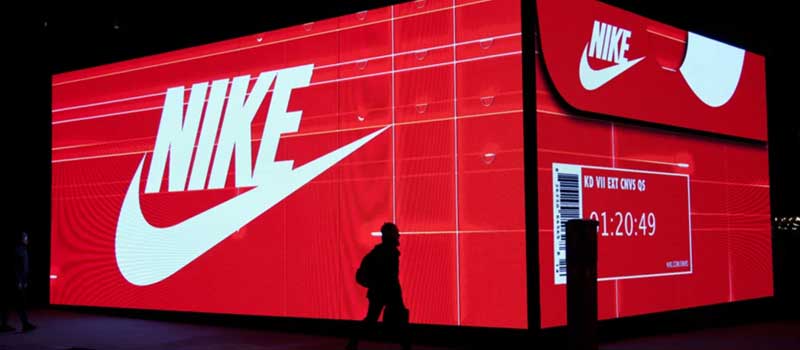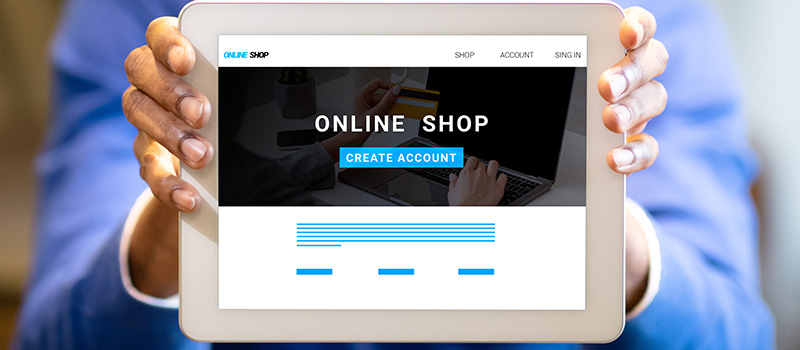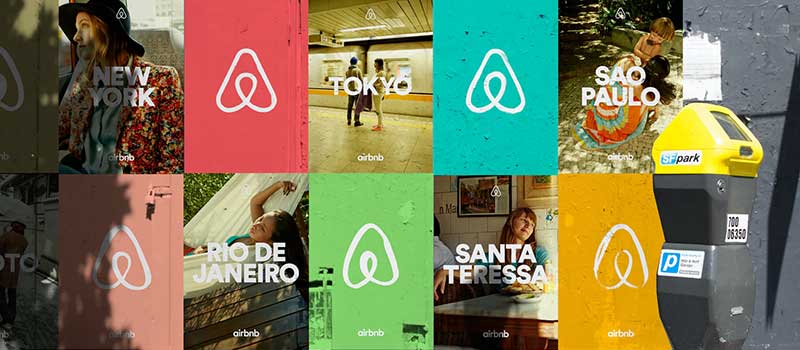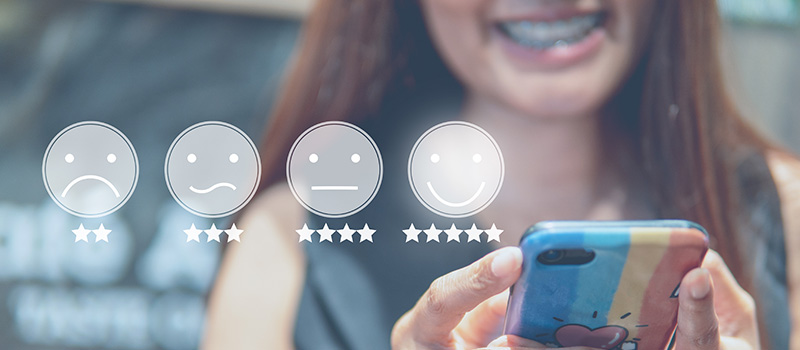Branding is the discipline of shaping how humans perceive a business to ultimately influence their purchasing decisions.
When we consider that humans are consumers and decisions are their behaviors, then consumer behavior is at the center point of everything brands do.
From the decision making process, to the psychology behind those decisions, the path to purchase follows a common set of steps, whether consumers are aware or not.
When you understand the path and the strategies you can use along the way, you're at a distinct advantage to influence purchasing decisions.
In this article, you'll discover 9 Consumer Behavior & Buyer Psychology Strategies to turn prospects into loyal customers.
Definition of Consumer Behavior

Consumer behavior research dives into the complex realm of why consumers make specific purchasing choices. At its core, this behavior is influenced by various factors — both intrinsic and extrinsic.
But to see consumer needs and grasp its essence, it's crucial to trace back its origins.
Historically, the study of consumer behavior analysis emerged with the rise of consumer-based marketing strategies in the early 20th century.
As markets became more competitive, businesses quickly realized that understanding customer buying behavior and the nuances of why consumers choose one product over another was crucial for effective marketing efforts.
Theoretical models, such as the stimulus-organism-response model, proposed that external stimuli (like marketing campaigns) could influence internal cognitive processes, leading to particular purchasing responses.
In other words, what brands said, actually shaped perceptions and buying decisions.
What, Why, When, How Consumer Behaviour Works:

At its core, consumer behaviors is a multi-layered study of why consumers make the decisions they do.
It's not just about
What they buy, but also
Why they buy,
When they buy,
How often they buy, and even
Why they choose not to buy certain products or services.
Brands that align their effective marketing strategies well with consumer behavior stand a better chance at resonating with their target audience.
From shaping the brand’s visual identity to crafting its value proposition, understanding consumer behavior informs every facet.
PRO Brand Strategy BluePrint
Build Brands Like A Pro Brand Strategist

The Psychology Behind and Understanding Consumer Buying Behavior

Human decisions are driven by a combination of cognitive biases and emotional factors.
Knowing these can help brands tap into the deep-seated drivers of purchase decisions.
Cognitive biases

These are inherent thinking errors humans make in processing information. Let’s discuss a few examples:
The Anchoring Effect:
Consumers often rely heavily on the first piece of information they receive (the "anchor") when making decisions. For example, seeing a discounted price beside the original price can make a product seem like a better deal.
The Scarcity Principle:
When products are perceived as scarce, they're often seen by potential customers as more valuable. We’re all succeptable to this. Limited-time offers or limited-stock items can push consumers to purchase more quickly.
The Endowment Effect:
People tend to assign more value to things simply because they own them. We tend to be more afraid of what we can lose than missing out on what we can gain. This bias is why trial periods or return policies can be so effective; once consumers have something, they're less likely to want to give it up.
Emotional drivers:
Consumers are often driven by emotions, more than they'd like to admit. Brands that evoke strong emotional reactions, whether through nostalgia, happiness, or a sense of belonging, can have a profound influence on purchasing decisions.
Understanding Consumer Behavior Components

Here are a list of the top factors that influence consumer behavior:
Psychological factors:
These are internal factors to the consumer and include perception, motivation, belief, and attitudes. For example, a consumer might be driven to purchase eco-friendly products because of their strong belief in environmental conservation or limited edition sneakers because they want to seem cool.
Social factors:
Peers can influence consumer behavior and social norms play a huge role. A recommendation from a friend or family member can significantly influence a consumer's decision-making process. Would you more likely pick a brand because you saw an ad for it or because your best friend recommended it?
Personal factors:
Aspects such as individual customers' age, income, occupation, and lifestyle affect consumer buying behavior and decisions. For example, as people grow older, their needs and wants evolve, which in turn influences their purchasing decisions. I for one at 42, am not in many markets that I was at 22, though I am in others.
Consumer Decision-Making Process

Every purchasing decision a consumer makes can be traced back through a decision-making process. While each individual's journey might be unique, there are common steps that consumers tend to follow:
Awareness:
Before consumers can decide to buy a product or service, they first need to be aware of its existence. Brands often use marketing campaigns to introduce potential customers to their offerings.
Interest:
Once consumers are aware, they develop an interest in the brand or product. At this stage, they seek more information, often diving deeper into product features or reading reviews.
Desire:
Here, consumers begin to emotionally align with the product or service. They start to visualise the benefits and how it fits into their lives. Once they psychologically live the benefit, they feel the desire.
Action:
The culmination of the previous stages results in the purchase. But action isn't just about buying the initial purchase; it's also about buying repeatedly, recommending the product to others or posting a review.
Now, while the above stages the end to be linear, consumers often display different buying habits and behaviors:
Variety Seeking Buying Behavior:
Here, consumers switch brands often, mostly out of boredom rather than dissatisfaction. Think of trying a different dessert flavour each time you visit a bakery. This is more a personality factor which leans more towards those who desire novelty.
Complex Buying Behavior:
This occurs when consumers are buying an unfamiliar, expensive product, or an infrequently bought item. Buying a luxury car or a new house is not something you buy on an upsell on Amazon (Becuase people bought this toilet seat, they also bought this house). It requires significant thought and research.
Dissonance-reducing Buying Behavior:
Post-purchase, a consumer might experience cognitive dissonance, also known as buyers remorse, wondering if they've made the right choice. They seek validation through reviews or friends’ opinions and might juggle this feeling on uncertainty for hours or days
Habitual Buying Behavior:
As the name suggests, consumers make impulse purchases out of habit, without much thought. Daily grocery shopping is a perfect example as are the low ticket upsells on Amazon or any otther ecom site.
Consumer Behavior and Digital Transformation

The rapid advent of technology has transformed the way consumers engage with brands:
Digital channels:
From social media to websites, digital channels have changed the way consumers get information, read reviews, and make purchases. Online shopping, for instance, has introduced a convenience that many consumers now prefer.
E-commerce behavior:
With the ease of comparing products, reading reviews in real-time, and availing discounts, e-commerce platforms have had a massive influence on consumer buying behavior.
Impact of Social Media on Consumer Behavior

Social media platforms have bridged the gap between consumers and brands:
Influencer Marketing:
With the rise of social media personalities, brands now have a new avenue to reach their target audience. Influencers offer credibility and can significantly sway their followers' purchasing decisions.
Community Building:
Brands can now build communities around their own products and services, creating a space for users to share experiences, reviews, and feedback. This not only aids in customer retention but also in attracting new customers to build brand loyalty.
Branding Strategies Shaped By Consumer Insights

For brands, to identify consumer behavior is pivotal:
Basics of branding:
When brands truly grasp the motivations, desires, and pain points of their consumers, they can tailor their marketing messages, product features, and overall branding strategies effectively.
Your Customers Will Inform Your Strategy:
The best insights often come from the consumers themselves. Brands that actively seek feedback, conduct surveys, or engage in focus groups gain valuable data that can inform their future strategies.
Resources: Tools That Marketers Can Use to Research Consumer Behavior

The cornerstone to create effective marketing strategies lies in the understanding of consumer behavior. Here are some accessible tools that can be instrumental:
Surveys and Questionnaires:
Platforms like SurveyMonkey and Google Forms make it easy to collect data from consumers. The insights garnered can shape marketing campaigns, product launches, and branding strategies.
Focus Groups:
A more interactive way to understand consumers. Brands gather a separate group of people, usually representing their target market or target audiences, and engage them in discussions about their products or services.
Google Analytics:
This tool provides insights into how consumers interact with a brand's website – where they're coming from, what they're looking at, and how long they're staying.
Social Media Analytics:
Platforms such as Facebook, Instagram, and Twitter offer robust analytics to how companies understand their audience demographics, interests, and engagement metrics.
Case Studies
Nike

Nike, founded in 1964, has been one of the world's leading brands in sports apparel and footwear. Their iconic 'Just Do It' slogan and the Swoosh logo are recognizable around the globe.
Consumer Behavior Insights:
Customization Needs:
With the rise of personalization in many sectors, consumers started seeking products that were unique to them. Recognizing this, Nike introduced the NikeID, allowing customers to customise shoes according to their preferences.
Emphasis on Stories:
Nike's marketing campaigns often highlight individual athlete's stories, connecting deeply with consumers who seek inspiration in their personal fitness journeys.
Strategies Employed:
Nike Training Club App:
Nike realised consumers were shifting towards at-home workouts, especially with the rise of mobile app fitness solutions. They launched the NTC app to cater to this need, providing value and strengthening brand loyalty.
Sustainability:
Understanding the eco-conscious consumer, Nike introduced the 'Move to Zero' initiative, emphasising sustainability in their products and supply chain.
Apple

Founded in 1976, Apple has established itself as a pioneer in personal computing, mobile devices, and digital music.
Consumer Behavior Insights:
Design and Aesthetics:
Apple recognized the consumer's appreciation for minimalist design and high-quality materials early on.
Ecosystem Synergy:
Consumers value seamless experiences between products. Apple's ecosystem, where all devices work in harmony, answers this call.
Strategies Employed:
Product Launches:
Apple's product launch events are more than just announcements—they’re cultural phenomena. They build anticipation and are strategically timed, often leading to instant spikes in sales.
Retail Spaces:
Apple Stores, designed to be both aesthetic and functional, allow consumers to experience the brand firsthand, which boosts brand loyalty.
Explore Brand Strategy
Programs & Tools
The Digital Age and Consumer Behavior

With the rise of the internet and subsequently, social media, consumer behavior witnessed a paradigm shift.
The modern consumer is no longer a passive recipient of marketing messages.
They are active participants, shaping brand narratives and influencing peers with their reviews and feedback.
E-commerce and Online Shopping

The e-commerce industry has seen exponential growth in the last two decades. Convenience, variety, and often, better pricing have driven consumers toward online platforms.
The ease of comparison shopping online, combined with the surge of mobile shopping apps, has led to a more informed and discerning shopper.
They're likely to spend significant time researching, reading reviews, and even checking out user-generated content before making a purchase decision.
Moreover, the line between online and offline shopping has blurred with concepts like "BOPIS" (Buy Online, Pickup In-Store) gaining traction.
This has forced retailers to ensure consistency in consumer experience across all touchpoints.
Influence of Social Media and Influencers

Platforms like Instagram, TikTok, and YouTube have redefined how products are marketed.
Influencers, individuals who've amassed a following due to their expertise or charisma, now play a pivotal role in shaping consumer's behavior and opinions.
The power of influencer marketing lies in its perceived authenticity. Recommendations from a trusted influencer can significantly sway purchasing behaviors, especially among younger demographics.
However, with the rising cases of undisclosed partnerships and "filter realities," there's also a growing skepticism around influencer endorsements.
This demands a more transparent and genuine influencer-brand relationship.
Future Trends in Consumer Behavior
Experience Over Product

Today’s consumers are more interested in experiences than just products.
This can be seen in the rise of experience-based services like Airbnb Experiences or the popularity of unboxing videos.
Brands will need to focus on how their product or service enhances a consumer's life or offers a unique experience.
Increased Importance of Peer Reviews

With platforms like Yelp, Amazon reviews, and Google My Business, peer reviews play an even more significant role in influencing purchase decisions.
Brands will need strategies to encourage positive reviews and handle negative feedback proactively.
AI and Personalization

The rise of AI means even more personalized shopping experiences.
Brands will use AI to analyze consumer behavior in real-time, offering product recommendations, personalized discounts, and more.
Emphasis on Local

Globalisation allowed consumers access to worldwide products.
However, there's a renewed emphasis on local produce, artisans, and businesses, driven by both sustainability concerns and a sense of community.
Digital Detox

As much as digital platforms have become central to our lives, there's a growing trend towards 'digital detoxes.'
Brands may need to find ways to reach consumers that don't always rely on digital channels.
Over To You
Consumer behavior, intricate as it may be, forms the backbone of successful branding and develop effective marketing strategies.
By understanding the psychological, social, and personal factors that influence buying behavior, brands can craft strategies that resonate.
It's a continuously evolving field, and those who stay abreast of its shifts and nuances will undoubtedly lead the pack.
FAQs
1. Why is understanding consumer behavior crucial for brands?
Grasping consumer behavior lets brands tailor their own marketing campaign efforts to resonate more profoundly, leading to increased sales and brand loyalty.
2. How has digital transformation affected consumer behavior?
The digital era has introduced new channels and platforms, changing how consumers discover, interact with, and purchase products.
Social media platforms allow brands to directly engage with their audience, receive feedback, and adapt in real-time, making them pivotal in influencing purchasing decisions.
4. Are there universal steps in the consumer decision-making process?
While individual journeys may vary, consumers typically follow stages like awareness, interest, desire, and action.
5. What future trends are anticipated in consumer behavior?
Trends like increased emphasis on online customer experiences, sustainability, and value-based purchasing are on the horizon.






